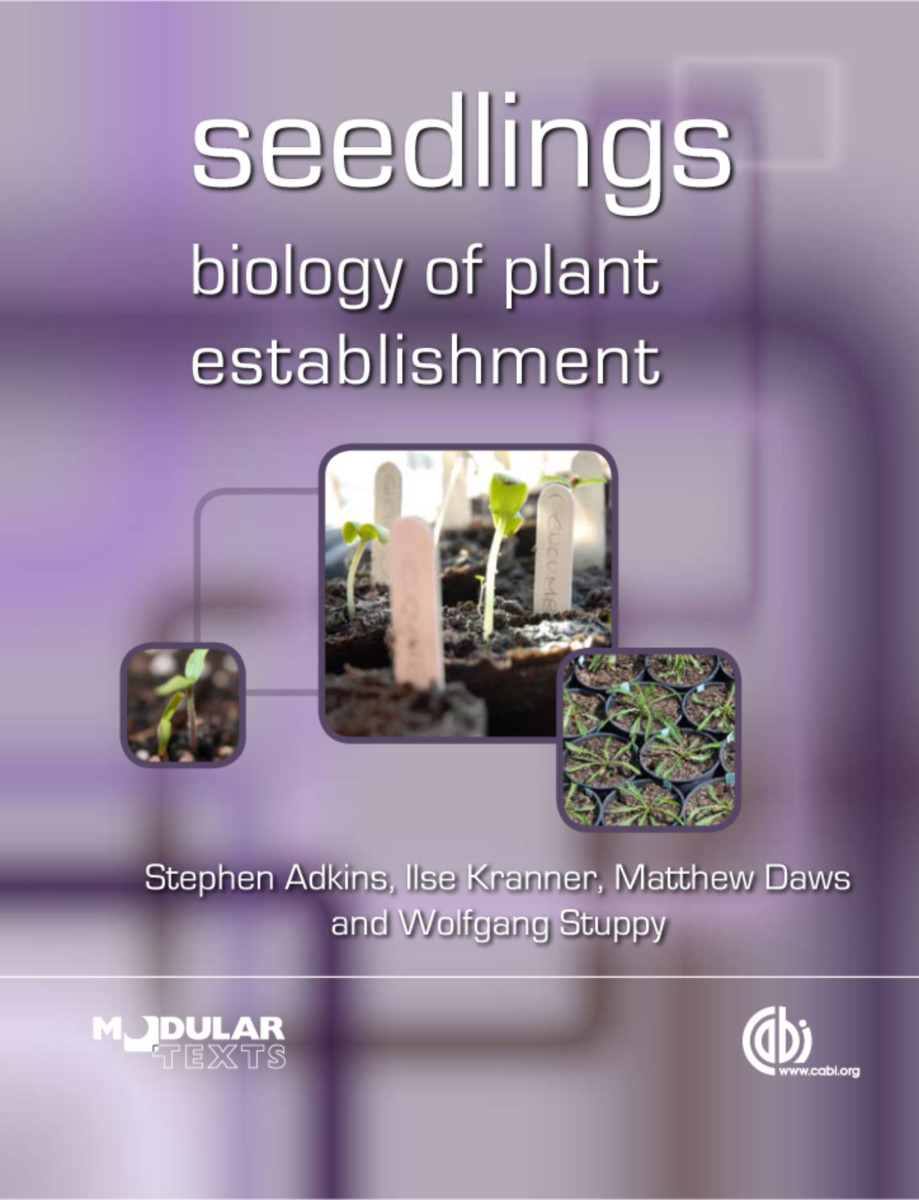- Publisher
CABI - ISBN 9781845937904
- Language English
- Pages 256 pp.
- Size 7.5" x 9.75"
Seedling establishment is the most critical phase in plant development, making the seedling an important area in basic and applied research. This new graduate-level textbook presents key topics such as different types of germination, the transition from seed to seedling, hormonal regulation of trophisms and morphogenesis and autotrophy acquisition, going on to consider seedling ecology, how seedlings survive in extreme environments and the seedling stage in weeds, agriculture and environmental plants. Written by authors from diverse fields of study and research, this textbook is an essential resource for students and researchers in plant ecology, botany, agriculture, conservation, and restoration ecology.
1) Introduction
1.1 What is a seedling?
1.2 The biological significance of the seedling stage
2) From seed to seedling
2.1 Seed dispersal
2.1.1 The role of dispersal
2.1.2 Morphological adaptations assisting dispersal
2.2 The internal morphology of seeds
2.2.1 Storage tissues
2.2.2 Embryo types
2.3 Seed germination
2.3.1 Definition of germination
2.3.2 Dormancy and soil seed banks
2.3.3 Conditions for germination
2.3.4 Events before and after radicle protrusion
3) Seedling structure and development
3.1. Morphological types of germination
3.1.1. Epigeal germination
3.1.2. Hypogeal germination
3.2. Seedling development and establishment
3.2.1. Seed size and life form
3.2.2. Stages of seedling development
3.3. Seedling vigour
4) Seedling biochemistry
4.1. From seed to seedling - transition to a photoautotrophic life-style
4.1.1. Mobilization of food reserves
4.1.2. Development of the photosynthetic capacity
4.2. Nutrient and water uptake: nitrogen and sulphur assimilation
4.3. Protection from environmental stress
4.3.1. Water
4.3.2. Light intensity
4.3.3. Soil chemistry
4.3.4. Oxidative stresses
4.4. Predation protection
4.4.1. Shoots
4.4.2. Roots
4.5. Response to damage (cell death / necrosis / arrested development)
5) The co-ordination of early development
5.1. The physics of emergence
5.2. Tropisms
5.2.1. Geotropism
5.2.2. Phototropism
5.2.3. Thigmotropism
5.2.4. Circadian rhythms
5.3. Photomorpogenesis
5.4 Signalling networks and coordination of development
6) Seedling ecology
6.1 Why seedlings die
6.1.1 Abiotic factors
6.1.2. Biotic factors
6.2. Community structure and dynamics
6.3. Impacts of climate change
6.4. Relevance for ecological restoration?
7) Specialised life styles - extreme environments
7.1. Parasitic
7.2. Aquatic
7.3. Salt marsh/mangrove
7.4. Desert
7.5. Mycorrhizal
8) Specialised life styles - agricultural & environmental plants
8.1. Maximising plant seedling establishment
8.2. Creating uniformity and synchrony
8.3. Creating rapid growth
8.4. Promoting competitive ability
9) Specialised life styles - weeds
9.1. Minimising weed seedling establishment
9.2. Competitive interactions with crops
9.3. Chemical interactions with crops
9.4. Special tolerances to stresses
9.5. Promoting competitive ability
10) Summary Chapter
Stephen Adkins
Stephen Adkins is Professor of Plant Physiology at The University of Queensland (UQ). He obtained a degree in Botany and Zoology from the University of London and a PhD in weed physiology from the University of Reading in England in 1981 and has served as a postdoctoral fellow at the University of Saskatchewan, Saskatoon in Canada (1981-84) and at Murdoch University, Perth, Australia (1984-88). He joined UQ in 1988 and has spent the last 30 years studying various tropical and subtropical crops and pastures, their weeds and the native plant community. Steve has held several leadership roles at UQ since 2010, including Deputy Director and Acting Director in the UQ Centre for Plant Architectural Informatics. In these roles, he has led initiatives that have improved teaching quality and the student experience, instituted guidelines and funding schemes for supporting the career development of RHD students and ECRs, and established several new cross-cutting research networks in collaboration with key external partners. He has served as Treasurer and for two terms as the President of the Asian-Pacific Weed Science Society. His research focus is tropical plants especially coconut, and conservation using ex situ seed banking and tissue culture. He has been a principle investigator and scientific advisor on more than 50 scientific projects worth more than $12 million. He has published more than 180 peer reviewed papers in international journals including Proceedings of the National Academy of Sciences, and supervised more than 50 research higher degree and 40 honors students to completion.
I. Kranner
I. Kranner is at the Royal Botanic Gardens, Kew.
M. I. Daws
M. I. Daws is at the Royal Botanic Gardens, Kew.
W. Stuppy
W. Stuppy is at the Royal Botanic Gardens, Kew.


